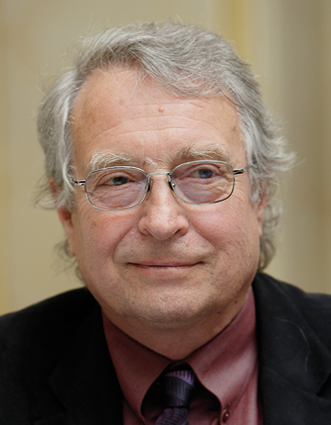
Mr. Friedrich Garzarolli
Fuel Material
BIOGRAPHY
Mr. Friedrich Garzarolli retired from Framatome ANP in March 2002, where he has held various managerial and research positions, dealing with fuel rod performance analysis, planning and evaluation of irradiation tests, materials characterisation and evaluation of irradiation effects in materials. His degree as Diplom Ingenieur in metallurgy was obtained from the University of Leoben, Austria, in 1963.
He has been active in the following fields:
- Development of new fuel assembly materials, especially cladding for BWRs and PWRs
- Modelling of corrosion for zirconium alloys and stainless steels
- Effect of water chemistry on cladding corrosion
- PCI failures of cladding
- In-reactor dimensional stability
- High-burnup performance
- Failure mechanisms and remedies
- Microstructure evolution due to reactor irradiation
How did you get started as an engineer?
I studied material science at the Montanistic University in Leoben, Austria.
Your career history?
I started at AEG in Karlstein in 1964 working on BWR and high temperature steam reactor materials (all material in primary circuit). Later I was directing PIE cladding examinations at the Karstein hot cells. In 1974, after the merger of AEG and Siemens to KWU, I moved to KWUs Fuel Lab in Erlangen. Here I was directing performance analysis and material development for PWR and BWR fuel elements. There are about 200 publications describing a large fraction of my contributions.
How did you get introduced to ANT International and the ZIRAT Programme?
I was asked to contribute to ZIRAT4 by Al Strasser. Later, after my retirement I was asked by Peter Rudling to participate as an expert member of the ZIRAT team. I have been participating since ZIRAT7 (since 2002).
How has the field of nuclear materials changed during your career, and how does ZIRAT fit in?
During my active time it has changed from careful performance analysis to a careful material development. After my retirement I got the impression that both fuel material development and fuel performance analysis have changed to fulfil mainly marketing demands. Many of the experienced people working in this field are retired. The most important goals of the critical review of the literature, that we do in the ZIRAT/IZNA Program, are 1 – to preserve the state of knowledge, 2 – to asses the development and performance analysis of the fuel suppliers, 3 – to point out important aspects, 4 – education of young engineers, and 5 – to help utilities in case of problems.
What do you foresee for the future in the nuclear industry?
I think that due to the increase of oil and gas prices new reactors will be ordered in US and Europe soon. New reactor types will also be developed with the goals of further improved safety and enhanced U235 utilisation. As far as LWR fuel is concerned, I expect 1 – even more demanding fuel duties, 2 – a further optimisation of ZIRLO type materials to become more competitive with M5 for PWR fuel, 3 – new BWR material development programs, 4 – a step back to a SRA cladding condition for BWR fuel to avoid radially oriented hydrides at high burnups, 5 – introduction of PCI improved fuel, and 6 – development of fuel with improved thermal conductivity.
How do you spend your leisure time?
Living with my wife, mountain hiking, bicycling and visiting interesting spots of this world.
